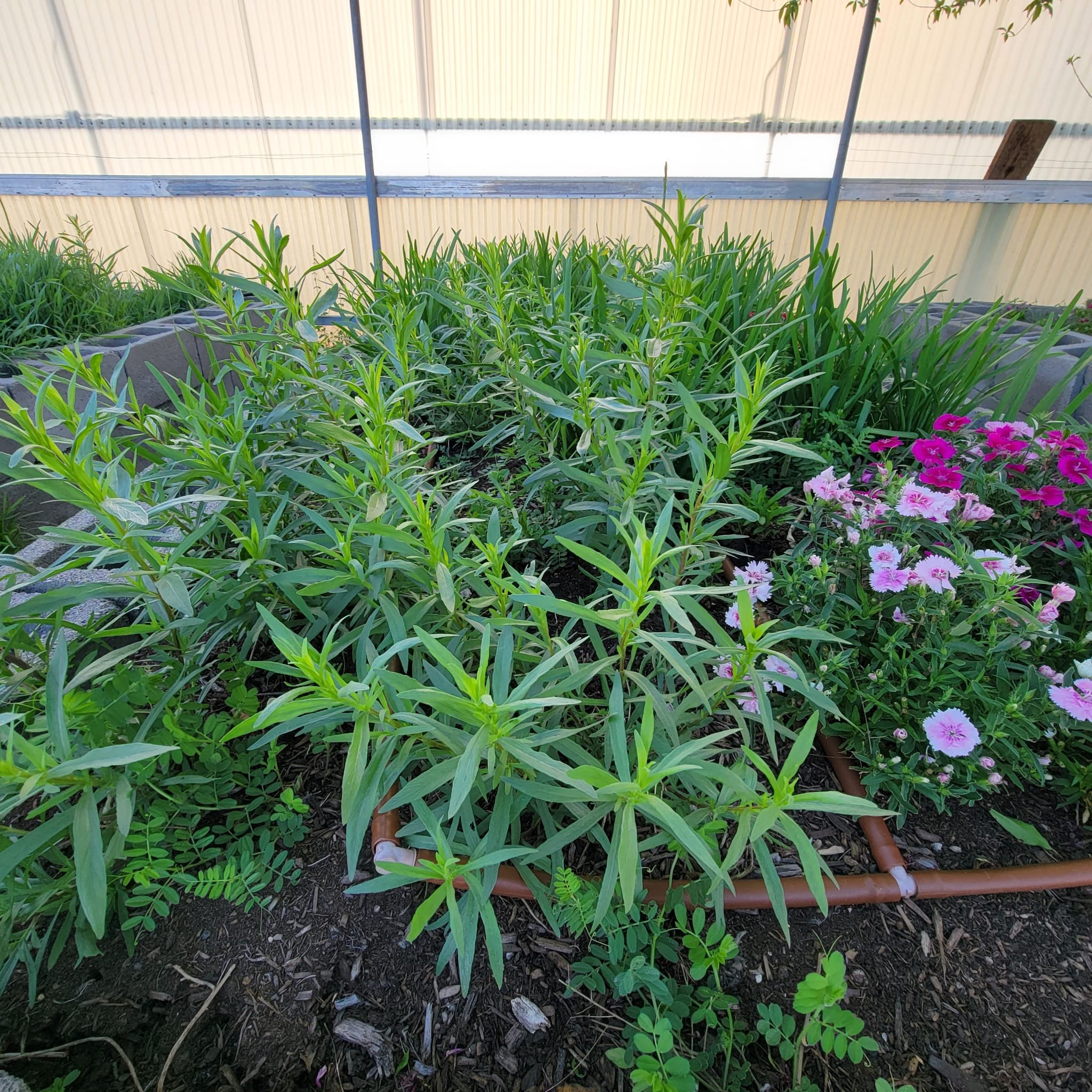Tarragon
Scientific name: Artemisia dracunculus of the Asteraceae family. Believed to be native to Siberia.
Tarragon is a popular and traditional herb in French Cuisine. It is a perennial plant and quite easy to grow in our North Texas climate. It likes a sunny spot in alkaline to neutral soils and doesn't like wet conditions. We have had ours in our raised bed garden for two years now. Some research suggests the plants are not long-lived and will need to be replaced every 3 to 4 years. They don't set seed and rarely flower, according to one source I read, so you will need to replace the plants in spring if you notice yours dwindling.
There are two types of Tarragon: French and Russian. The French variety has better flavor and the Russian variety is hardier. French Tarragon does well in our North Texas climate, so go for the better-flavored variety.
Culinary Uses
It is most well-known for its use in chicken and fish dishes and prized for its aniseed-like flavor.
You can add sprigs to white wine vinegar to make tarragon vinegar.
Storage
use fresh leaves from Spring until Fall. In the Winter you can use either dried or frozen leaves. Pick leaves mid-summer for dehydrating or freezing.
Health Benefits
* disclaimer: we are not medical professionals and this article isn't meant to be used for medical purposes.
The French call Tarragon "king of the herbs" as it is very common in their cooking in stews, sauces, fish, chicken, and omelets. It is used for digestive issues, heart health, poor appetite, water retention, toothache as well as sleep, and menstruation problems. Some research shows that tarragon essential oil can be used to fight Staph infection and E.coli.
If you are sensitive or allergic to the Asteraceae/Compositae family, which includes sunflowers, daisies, ragweed, chrysanthemums, and marigolds, then this herb may be problematic for you and best you stay away.
